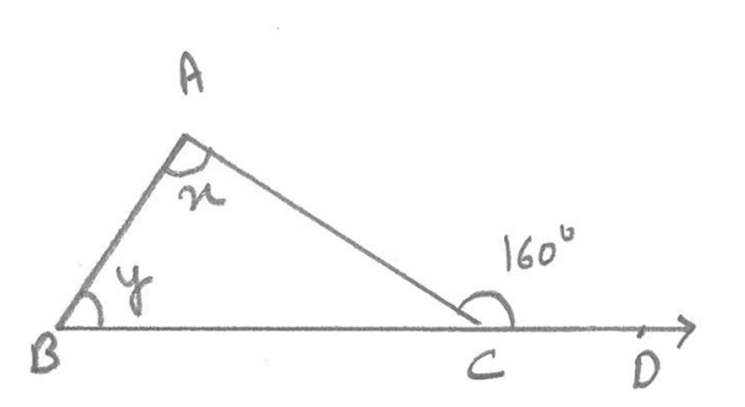Important Practice Problems for CBSE Class 7 Maths Chapter 6: The Triangle and Its Properties FREE PDF
FAQs on CBSE Class 7 Maths Important Questions Chapter 6 - The Triangle and Its Properties
1. What are the most important CBSE Class 7 questions on the angle sum property of a triangle (2025–26)?
- Expected question format: Given two angles of a triangle, calculate the third using angle sum property (Σ angles = 180°).
- Sample HOTS: If two angles of a triangle differ by 30° and their sum is 100°, what are all three angles?
- Exam tip: Always show working steps; marks are awarded for logical progression.
2. How can you identify different types of triangles in CBSE Class 7 important questions, based on side lengths and angles?
- Triangle by sides: Equilateral (all equal), Isosceles (exactly 2 equal), Scalene (none equal)
- Triangle by angles: Acute angled (all < 90°), Right angled (one 90°), Obtuse angled (one > 90°)
- Exam trend: Classification is a common 1-mark question; CBSE expects accurate terminology as per 2025–26 syllabus.
3. How do examiners set reasoning-based important questions on the exterior angle property for Class 7?
- Key property: An exterior angle equals the sum of the two remote (opposite) interior angles.
- Sample: If an exterior angle in ΔABC is 120° and one remote interior angle is 45°, find the other.
- Exam tip: Write the formula step and substitution to secure full marks.
4. What are high-weightage HOTS questions on the Pythagorean theorem for CBSE Class 7 maths?
- Application focus: Finding a missing side in a right-angled triangle when two sides are given (especially in real-life context, e.g., ladder, garden, field)
- Possible 3-mark HOTS: "A triangle has sides 6 cm, 8 cm, and 10 cm. Prove if it is a right-angled triangle. Show all calculations."
- Board trend: CBSE 2025–26 may mix conceptual and calculation elements.
5. Why are ‘impossible triangles’ featured in Class 7 important questions, and how are such problems solved?
- Exam logic: To test understanding of the triangle inequality: the sum of any two sides must be greater than the third side.
- Sample conceptual trap: "Can you have a triangle with sides 4 cm, 4 cm, 9 cm? Justify."
- Answer approach: Clearly check all pairs; if any fail, such a triangle cannot exist.
6. What marking schemes apply to ‘find the value of x’ angle-chasing questions in the CBSE Class 7 triangle properties chapter?
- Marking breakdown (2025–26): 1 mark: writing the property used, 1 mark: equation setup, 1 mark: correct working and answer.
- Common misconception: Missing property reference or skipping algebra steps may result in lost marks.
7. What are the frequently asked 2-mark important questions on ‘classification of triangles’ for CBSE Class 7?
- Types: Given three angles or three sides, classify the triangle both by sides and by angles.
- Expected answer: Two-part response: one for angle type, one for side type.
- Example: Angles 110°, 35°, 35° → Obtuse angled, isosceles triangle.
8. What pattern-based important questions can be expected on ratio of angles in triangles (Class 7, 2025–26)?
- Examiner's logic: Give ratios like 3:4:5 and ask students to find angle measures using x (e.g., 3x + 4x + 5x = 180° → x = 15°).
- Marking tip: Show set-up and substitution steps to gain all marks.
9. How do important questions test application of ‘triangle terminology’ such as hypotenuse, base, and regular triangle?
- Sample Q: What is the name of the longest side in a right-angled triangle? (Answer: Hypotenuse)
- Reason for testing: Reinforces language and identification, as required in new competency-based CBSE pattern.
10. What are some less obvious but important conceptual traps students face with Class 7 triangle questions in CBSE exams?
- Confusing angle and side properties: Assuming equal angles imply equal sides (only true in equilateral/isosceles, not all cases)
- Angle sum/exterior angle misapplication: Using the property for non-triangle shapes
- Missing units: Always label angle/length answers with correct units (degrees/cm)
11. What are some important questions for CBSE Class 7 on perimeter and area of right-angled triangles?
- Theme: Find perimeter using all side lengths; find area using Area = 1/2 × base × height
- Expected complexity: Often combined with Pythagoras to derive missing base/height first
12. How do important questions in CBSE Class 7 test understanding of base angles in isosceles triangles?
- Marking weightage: Typically 2-marks: one for identifying equal base angles, one for calculation of the third angle
- Exam trend: ‘If one base angle is 40°, find the vertex angle’ (use 180° sum)
13. What kinds of comparison questions appear in CBSE Class 7 triangle properties important questions?
- Sample comparison: Compare given triangles based on sides, angles, or properties (e.g., Which has a longer perimeter?)
- Marking focus: Clear reasoning and units; may require brief justification statement.
14. How can you spot higher-order thinking (HOTS) important questions related to triangle properties for CBSE 2025–26?
- Look for: Multi-step, real-life scenarios (e.g., ‘A tree is supported by two ropes forming a triangle with the ground. Calculate the length of one rope.’)
- Skill tested: Application of multiple properties (Pythagoras, exterior angle, perimeter, etc.) in one problem.
15. Why do CBSE Class 7 exams include questions asking to ‘justify’ or ‘explain’ whether a set of sides or angles can form a triangle?
- Exam intent: Tests reasoning and conceptual grasp, not just memorization
- How to answer: Quote triangle inequality or angle sum property explicitly in short justification for full marks.
























